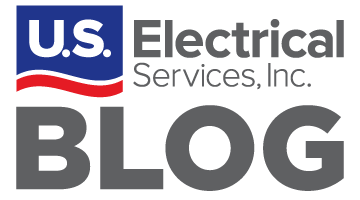
The reconditioning of electrical equipment is a convenient option for many people today. It can be an economical alternative to getting new equipment and can result in the updating of existing equipment. However, there are a number of precautions you must take to make sure your equipment is updated to standards. Read on to find out what NEMA’s policy on reconditioned electrical equipment is.
What is Reconditioning?
Reconditioning is defined as the process of restoring electromechanical systems, equipment, apparatus or components to operating conditions as recommended by the manufacturer’s instructions using only design qualified parts. When this process is done, it is necessary to obtain the service records, application environment and operation parameters of all electrical components. Sometimes this is not possible. If this is the case, it could have adverse effects on the reconditioning process.
Guidelines as to When to Recondition According to NEMA’s Policy
 According to NEMA’s policy, here are circumstances under which it is advisable to recondition electrical equipment:
According to NEMA’s policy, here are circumstances under which it is advisable to recondition electrical equipment:
- Reconditioning electrical equipment is a good idea if you are looking to extend the lifetime of the equipment and enhance it with additional features
- The reconditioning activity should be based on guidance documentation obtained from the Original Equipment Manufacturer or industry-developed standards. If there is a conflict between the two sources, the OEM should always prevail.
- Electrical equipment should be reconditioned to an industry developed standard to ensure that it is safe for use. Products that are good candidates for reconditioning should be reconditioned and qualified to industry standards including its design aspects, testing criteria and manufacturing specifications.
- Reconditioning work must be performed by qualified personnel.
- Before reconditioning of electrical equipment is performed, service records, application, environment, service life and operating parameters must all be obtained. Then a specialist will be able to determine if the product is suitable for reconditioning.
- NEMA’s policy includes an Appendix A that provides guidance on which components or assemblies are not suitable for reconditioning because they are not up to safety standards. Appendix B provides guidance on components that are suitable.
- The reconditioning of electrical equipment must utilize electrical product safety standards that apply to design aspects, testing criteria and manufacturing specifications to make sure the product will function as intended. These requirements will ensure that products are in usable and safe operating condition.
Integrity of Reconditioned Equipment
Reconditioned electrical equipment must meet many safety standards which is ultimately based on the manufacturer’s design, performance and safe operation and maintenance of their equipment. It must comply with the applicable standards that existed at the time the product was built. Any replacement parts should meet the design criteria necessary for the device to perform its intended function and safe operation. Replacements parts can not be counterfeit and equipment should operate safely after reconditioning occurs. Care must be taken to ensure equipment function safely as intended and documentation and demonstration should be made to ensure that any changes have not compromised the equipment.
Listing or Certification Marks
 NEMA’s policy requires that their members manufacture products that are evaluated by a third party certification program to ensure that they run safely. To prove this is the case, reconditioned products are marked with a listing or certification mark before they are shipped from the factory. When an item is reconditioned, it is up to the company that performed the reconditioning to determine if the mark should remain on the product. This is done through testing and analysis. If this listing or certification mark has been removed or obliterated, it is a sign that the reconditioning process has been performed by a third party. A reconditioning company may replace this listing with their own mark or seal that will provide traceability to the company that performed the reconditioning.
NEMA’s policy requires that their members manufacture products that are evaluated by a third party certification program to ensure that they run safely. To prove this is the case, reconditioned products are marked with a listing or certification mark before they are shipped from the factory. When an item is reconditioned, it is up to the company that performed the reconditioning to determine if the mark should remain on the product. This is done through testing and analysis. If this listing or certification mark has been removed or obliterated, it is a sign that the reconditioning process has been performed by a third party. A reconditioning company may replace this listing with their own mark or seal that will provide traceability to the company that performed the reconditioning.
There are a number of NEMA products that are not allowed to be reconditioned because of certain characteristic and requirements of those products which must be evaluated periodically to determine the safety performances so that they may maintain their mark or listing. These tests are normally destructive and sample sets of the products are not possible due to limited qualities or ratings of specific devices.
The UL Water Mark
Once a UL Mark is put on a product at the factory, it serves as proof that the product complies with applicable requirements. If field repairs, modifications or component replacements occur, there is no evidence that the mark is still valid. However, once the product leaves the factory, manufacturers have little control over what happens to that equipment. The UL has created rebuilt categories where the reconditioning is done in an organized, consistent manner under the supervision of their Follow-Up Services field representatives. When this occurs, the first action is the removal of the initial certification mark. Once reconditions is done, the manufacturer may apply a mark which certifies that the product has been safely reconditioned.
If a reconditioner does not remove a certification mark it will cause confusion. Any product that is used in the electrical field, should not bear this mark.
Buying reconditioned electrical equipment can be tricky so its important to familiarize yourself with NEMA’s policy before proceeding. This way you can be sure that all your equipment is up to safety standards. Good luck keeping safe with reconditioned electrical equipment.

